 by our College Data Analytics Team
by our College Data Analytics TeamPrinceton total enrollment is approximately 7,853 students. 4,689 are undergraduates and 3,079 are graduate students.
Male/Female Breakdown of Undergraduates
The full-time Princeton undergraduate population is made up of 51% women, and 49% men.
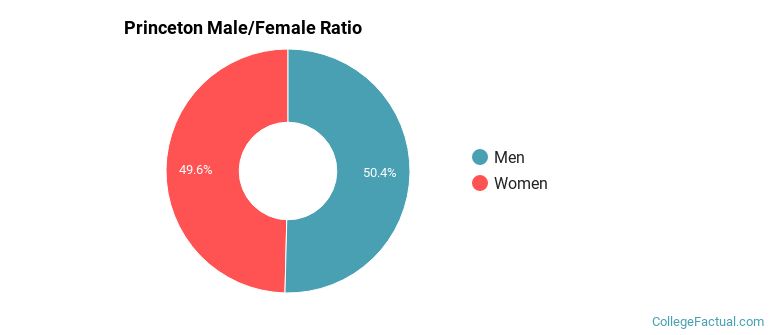
For the gender breakdown for all students, go here.
Princeton Racial/Ethnic Breakdown of Undergraduates

| Race/Ethnicity | Number |
|---|---|
| White | 1,703 |
| Asian | 1,179 |
| International | 546 |
| Hispanic | 499 |
| Black or African American | 418 |
| Multi-Ethnic | 277 |
| Unknown | 53 |
| Native Hawaiian or Pacific Islander | 5 |
See racial/ethnic breakdown for all students.
Male/Female Breakdown of Graduate Students
About 41% of full-time grad students are women, and 59% men.
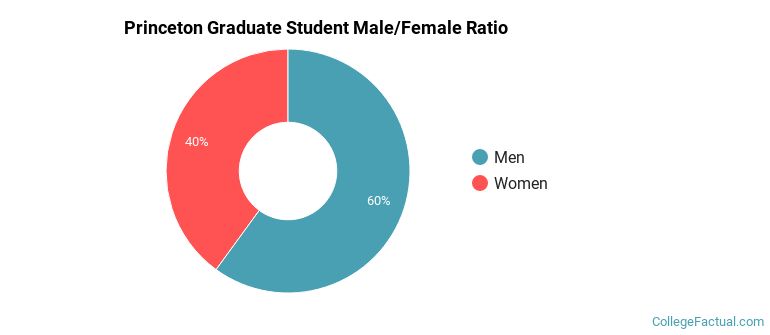
For the gender breakdown for all students, go here.
Princeton Racial-Ethnic Breakdown of Graduate Students
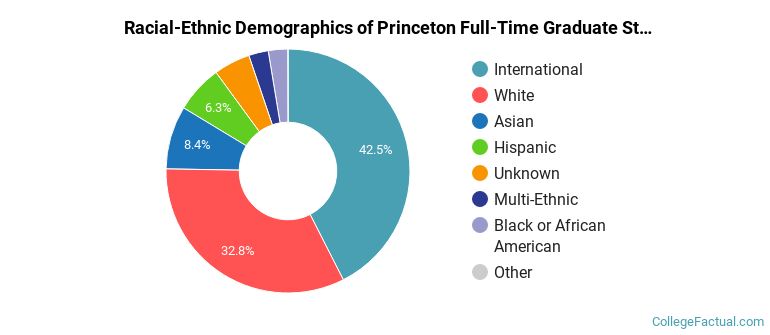
| Race/Ethnicity | Number |
|---|---|
| International | 1,267 |
| White | 1,004 |
| Asian | 280 |
| Hispanic | 209 |
| Unknown | 142 |
| Multi-Ethnic | 91 |
| Black or African American | 86 |
| Native Hawaiian or Pacific Islander | 0 |
See racial/ethnic breakdown for all students.
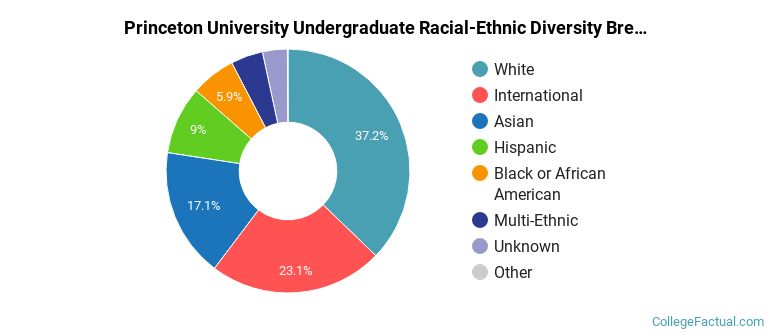
| Race/Ethnicity | Number |
|---|---|
| White | 2,715 |
| International | 1,824 |
| Asian | 1,461 |
| Hispanic | 713 |
| Black or African American | 507 |
| Multi-Ethnic | 369 |
| Unknown | 249 |
| Native Hawaiian or Pacific Islander | 5 |

There are approximately 3,664 female students and 4,189 male students at Princeton.
Princeton ranks 27 out of 2,183 when it comes to geographic diversity.
82.09% of Princeton students come from out of state, and 13.33% come from out of the country.

The undergraduate student body is split among 47 states (may include Washington D.C.). Click on the map for more detail.

| State | Amount |
|---|---|
| New Jersey | 202 |
| New York | 157 |
| California | 130 |
| Pennsylvania | 63 |
| Virginia | 58 |
Students from 114 countries are represented at this school, with the majority of the international students coming from China, Canada, and India.
Learn more about international students at Princeton.
A traditional college student is defined as being between the ages of 18-21. At Princeton, 58.41% of students fall into that category, compared to the national average of 60%.
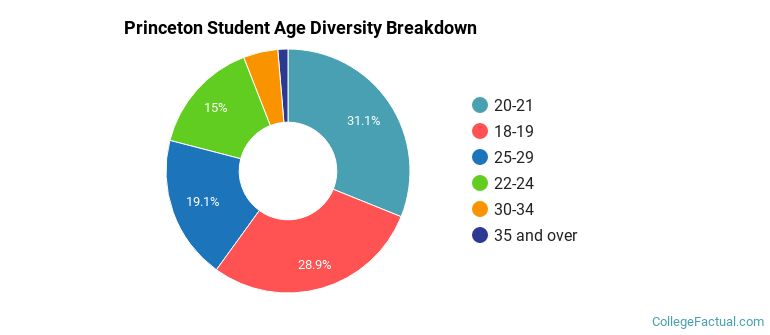
| Student Age Group | Amount |
|---|---|
| 20-21 | 2,506 |
| 18-19 | 2,326 |
| 25-29 | 1,535 |
| 22-24 | 1,212 |
| 30-34 | 369 |
| 35 and over | 108 |
| Under 18 | 0 |
Footnotes
*The racial-ethnic minorities count is calculated by taking the total number of students and subtracting white students, international students, and students whose race/ethnicity was unknown. This number is then divided by the total number of students at the school to obtain the racial-ethnic minorities percentage.
References
Department of Homeland Security Citizenship and Immigration Services
Image Credit: By Quantockgoblin under License
Learn more about how College Factual creates their Diversity Rankings.